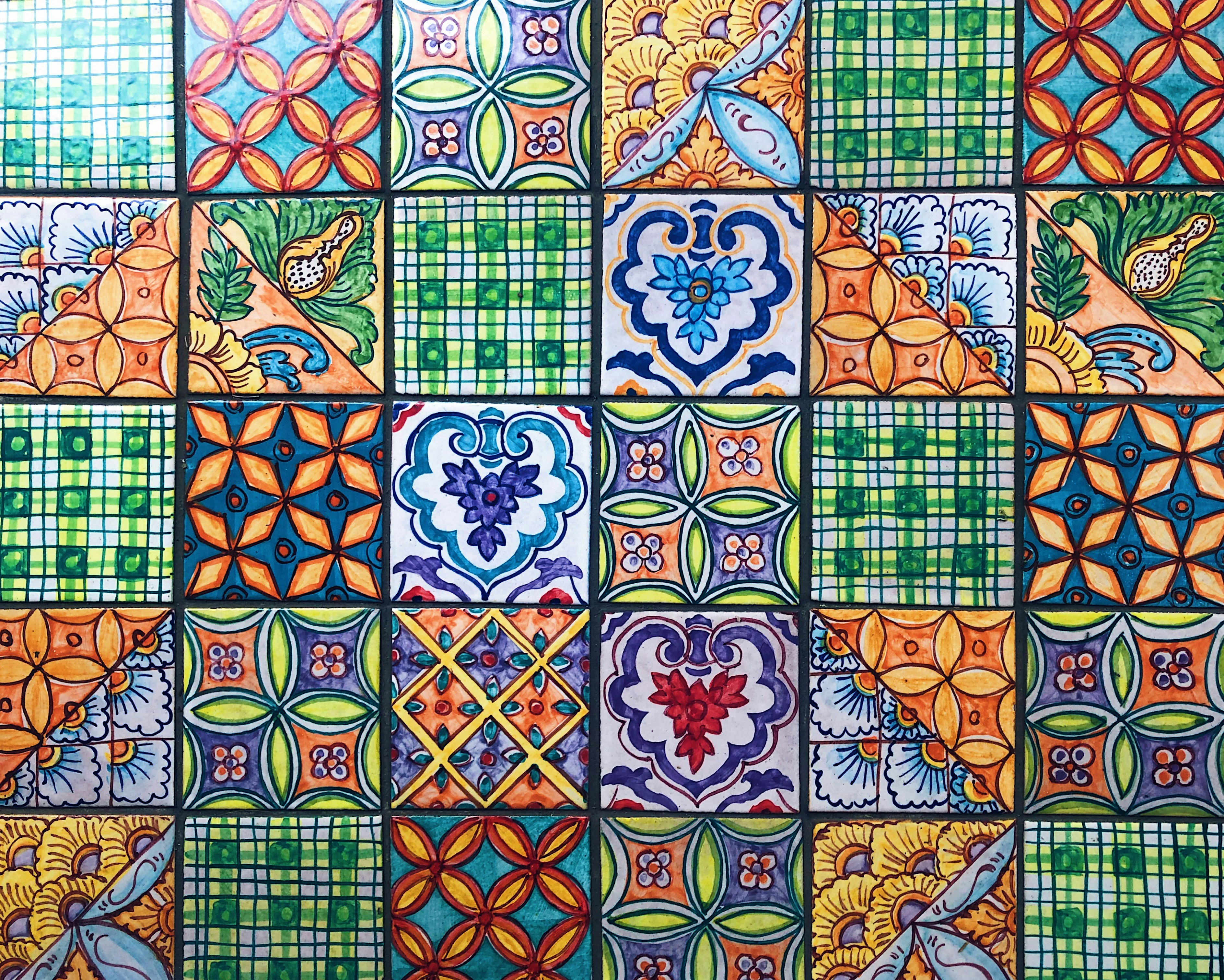By using our website, you agree to the use of cookies as described in our Cookie Policy
The Boss’s Daughter
Spanish Tile: Color, Pattern, and Passion

Spanish Tile: Color, Pattern, and Passion
When you think of Spanish tile, what comes to mind? Maybe it’s the rich blues and golds of a Mediterranean villa, or the intricate hand-painted Talavera tiles that seem to tell a story in every square inch. Spanish tile is bold, expressive, and unapologetically full of life — and it’s been inspiring designers and homeowners for centuries.
So how do you bring this vibrant tradition into your Bay Area home without going overboard? Let’s explore the history, beauty, and modern uses of Spanish tile.

A Brief History of Spanish Tile
Tile-making in Spain is a story that stretches back over 1,000 years. Much of its legacy comes from Moorish influence, when artisans introduced geometric motifs, glazed finishes, and brilliant colors that transformed architecture across the Iberian Peninsula.
By the 13th century, Spain had become a global hub for tile production. Regions like Valencia, Seville, and Toledo produced tiles that adorned palaces, cathedrals, and fountains. When the Spanish colonized the Americas, they carried this artistry with them. The famous Talavera tiles of Puebla, Mexico, are direct descendants of Spanish craft — still made by hand with the same techniques today.
Here in California, Spanish settlers brought tile traditions that we still see in our architecture: red clay roofs, colorful stair risers, and courtyard fountains lined with patterned mosaics. Walk through Walnut Creek or Oakland Hills, and you’ll spot echoes of this Old World artistry in Mediterranean Revival and Spanish Colonial homes. (Related read: The Hidden History of Rossmoor).
Key Characteristics of Spanish Tile
What sets Spanish tile apart? A few defining features:
-
Bold Colors – Deep blues, sun-kissed yellows, rustic reds, and emerald greens inspired by nature and the Mediterranean coast.
-
Intricate Patterns – Often repeating, with influences from Moorish geometry and Catholic symbolism.
-
Handcrafted Charm – True Spanish and Talavera tiles embrace slight imperfections, giving each piece unique character.
-
Durability – Cement and ceramic bases stand up to centuries of use indoors and out.
Fun fact: In Spain, tiles were often used not just for decoration but also for cooling — the dense ceramic helped homes stay comfortable in hot climates.
For contrast, consider how clean-lined Subway Tiles have remained timeless, while Spanish tiles lean into artistry and bold expression. Both have a place in design, but they tell very different stories. (See also: Italian Cabinets: The Art of Timeless Craftsmanship).
Where to Use Spanish Tile in Your Home
The beauty of Spanish tile is that it can go almost anywhere. Here are some favorite applications:
-
Kitchen Backsplashes: A few rows of patterned Talavera instantly add color and personality. Pair with neutral cabinetry for balance. (Explore more in Exploring the Beauty of Backsplash Heights).
-
Bathroom Floors or Walls: Create a Mediterranean spa feel with bold encaustic tiles underfoot. (See also: The Complete Bathroom Remodel Guide for Bay Area Homes).
-
Stair Risers: A Spanish classic — each step becomes its own piece of art.
-
Outdoor Patios: Talavera tiles thrive in California sunshine, giving patios an inviting, resort-like vibe.
-
Fireplaces: A tiled surround makes your living room glow with color and character.
Pro Tip: If you want a bold look, use Spanish tile in small doses (backsplashes, niches, fireplace surrounds). For a statement, go big with patterned floors.
How to Mix Spanish Tile with Modern Design
Not every home in the East Bay has Old World architecture — so how do you bring Spanish tile into a modern space? Balance is the key:
-
Pair bold tile with neutral countertops like quartz or granite. (Related: The Ultimate Guide to Countertop Materials).
-
Use patterned tile as an accent, letting clean-lined cabinets and simple flooring do the heavy lifting.
-
Try mixing textures — matte cabinetry, wood shelving, and glossy tile create harmony without clashing.
-
Consider lighting: Spanish tile comes alive in natural sunlight. (See also: Clear Views, Fresh Vibes: The Ultimate Guide to Window Replacements).
-

Modern Spin: Spanish Tile in the East Bay
While traditional Spanish homes may have whole courtyards covered in tile, modern Bay Area remodels often use these pieces as accents. Think:
-
A walnut-stained vanity paired with a jewel-toned mosaic backsplash.
-
A neutral kitchen with a surprise pop of Spanish tile behind the stove. (Related: Understanding Kitchen Zones).
-
Outdoor kitchens and fountains lined with patterned cement tiles.
Spanish tile fits beautifully with current design preferences, blending tradition with modern living. It’s no surprise it’s showing up in Top Home Remodeling Trends for 2025.
Budget and Maintenance
Spanish-style cement and encaustic tiles typically range from $8–$20 per square foot if handmade. Authentic Talavera tiles, especially imported, fall on the higher end. Porcelain “lookalike” tiles, which mimic the patterns without the upkeep, can be found for $3–$8 per square foot.
-
Maintenance: Cement tiles require sealing every few years. Hand-painted tiles can chip if not handled with care. Porcelain versions are nearly maintenance-free.
-
Installation: Intricate patterns often require skilled installers to align correctly — which can raise labor costs.
(Related: Budget-Friendly Remodeling: Big Style, Smart Spending)
(Related: Why Epoxy Grout is the Gold Standard)
Pro Tip: Don’t forget grout choice. A contrasting grout can highlight Spanish tile’s pattern, while a matching grout blends everything into a seamless whole.
Wrapping It Up
Spanish tile is all about passion, pattern, and personality. Whether you’re dreaming of a bold kitchen backsplash, a colorful stairway, or a timeless courtyard patio, these tiles bring Old World artistry into modern Bay Area homes.
Call-to-Action: Ready to bring color and life into your remodel? At Toupin Construction, we’ve helped East Bay homeowners design with tile from around the world — including stunning Spanish-inspired kitchens and patios. Reach out today and let’s start planning.
Next in the series: Moroccan Tile: Mystique and Geometry
‹ Back



Comments